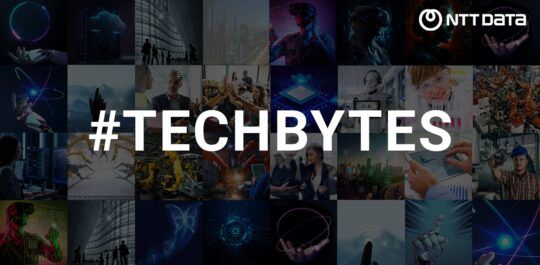Collaboration and co-innovation are key to generating innovative solutions that overcome the ever more complex challenges in business and in society. Executives who wish to lead their businesses into the future securely and sustainably should make a start today searching for suitable partners to work collaboratively on viable ideas for tomorrow. Or to jointly solve present-day problems.
Future-Proofing Business: Benefits of Collaboration & Co-Innovation

What Is Collaboration?
In this context, collaboration or co-innovation refers to the process of developing new ideas and technologies jointly with one or several partners. The underlying idea: In a collaboration, all partners contribute different competences, experiences, and expertise, and they work together on the development of genuine innovations to solve individual business problems or address general societal issues. Collaboration makes for greater agility in developing new concepts and thinking outside the box. It also makes it more likely that any mistakes made during the development or trial process are picked up. Collaboration partners can be other businesses as well as research institutions, universities, customers, or suppliers.
Collaboration Can Take Various Forms
- Outside-in collaboration: This involves bringing knowledge or skills into your own business from outside and using them to develop new ideas in-house.
- Inside-out collaboration: This is the exact opposite. Businesses contribute their own know-how to other companies and support them with their innovation development.
- Coupled collaboration: With this form of co-innovation, external knowledge is internalized while internal knowledge is made available to others, for instance within an innovation network. This generally yields the greatest amount of added value for all sides.
The Benefits of Collaboration
The digital transformation (and its speed), the demands made on global supply chains and their resilience, as well as climate change are only some of the challenges facing businesses nowadays. Increasing pressure to innovate is another issue that business executives need to deal with if they want to take their companies into the future securely and sustainably. Finding an appropriate innovative solution for each of these challenges that will stand the test of time exceeds the capabilities of not just small and medium-sized enterprises but most large companies as well. In addition, technological complexity and the multitude of options require wide-ranging expertise that individual businesses can hardly afford to acquire. And experts predict that this situation will grow more acute in future.
Rather than facing these challenges alone, it makes sense to join forces because the proverbial thinking outside the box encouraged by collaboration helps generate approaches that are truly novel. The diverse perspectives of the different collaboration partners produce synergy effects that ultimately benefit everybody. Particularly when those involved come from different industries or bring expertise from complementary areas to the table can people escape fixed trains of thought and innovation ensue.
And this does not only benefit those who initiated the collaboration process. While they frequently obtain a concrete solution to their existing problem at the end, others involved in the process also benefit because they in turn have the opportunity of testing out their technological solutions, concepts, or experiences in a concrete example and gain valuable experience.
But what about competition? During conversations about collaboration, one frequently posed question is if cooperating with others would not ultimately result in competitive disadvantages. It is important to look at the whole picture here. Of course it may be the case that others, even from the same industry, may profit from innovations generated by collaboration. But ultimately, the benefit gained from co-innovation is greater than any potential loss. Securing future business success is what it’s all about.
Collaboration in Action: from the RTLS Solution to CO2 Tracking
NTT DATA Business Solutions is a major partner in the technology network it’s OWL. Here, some 200 businesses, research institutions, and organizations collaboratively develop solutions for the digital transformation in the SME sector. The network and the innovations already generated from the collaboration are perfect examples of the enormous potential of collaboration and co-innovation.
One case in point is the innovation project “climate bOWL”, where partners from industry, with substantial assistance from NTT DATA Business Solutions, are developing a tracking and assistance system for mapping CO2e emissions generated during the production process for individual products and along the entire supply chain holistically, objectively, and transparently. Companies can use this system to identify their CO2 emissions in all relevant areas more precisely, which enables them to take purposeful measures to act more sustainably in their procurement, warehousing, production, and shipping logistics. In this instance, collaboration is not only addressing a company’s concrete concern, namely its desire to save CO2, but also developing an innovation that is scalable and industry-neutral as well as making an important contribution to solving a problem affecting the whole of society.
Co-Innovation with Customers
Collaboration does not only pay off for climate protection but also for fresh ideas for the “Smart Factory”. The RTLS solution loopa that NTT DATA Business Solutions developed in collaboration with Scheidt & Bachmann – market leader in the area of mobility system solutions – is a good example of how you can succeed in something that would have been hard to achieve by one party on their own. Combining the SAP expertise of NTT DATA Business Solutions with the know-how of Scheidt & Bachmann helped to produce a real-time indoor localization system that is not only automating the recording and posting of goods movements in the family business and thereby improving process efficiency, but is now also being used in other companies in different industries. A successful collaboration that has even culminated in a joint venture.
The Sharing of Knowledge Generates Added Value for all
There are good arguments for not embarking on the development of innovations on your own, but searching for partners and making good use of the synergy effects emerging from collaboration in order to remain fit for the future.
Are you interested in finding out more about our innovation projects or joining our partner network? If so, please get in touch.







